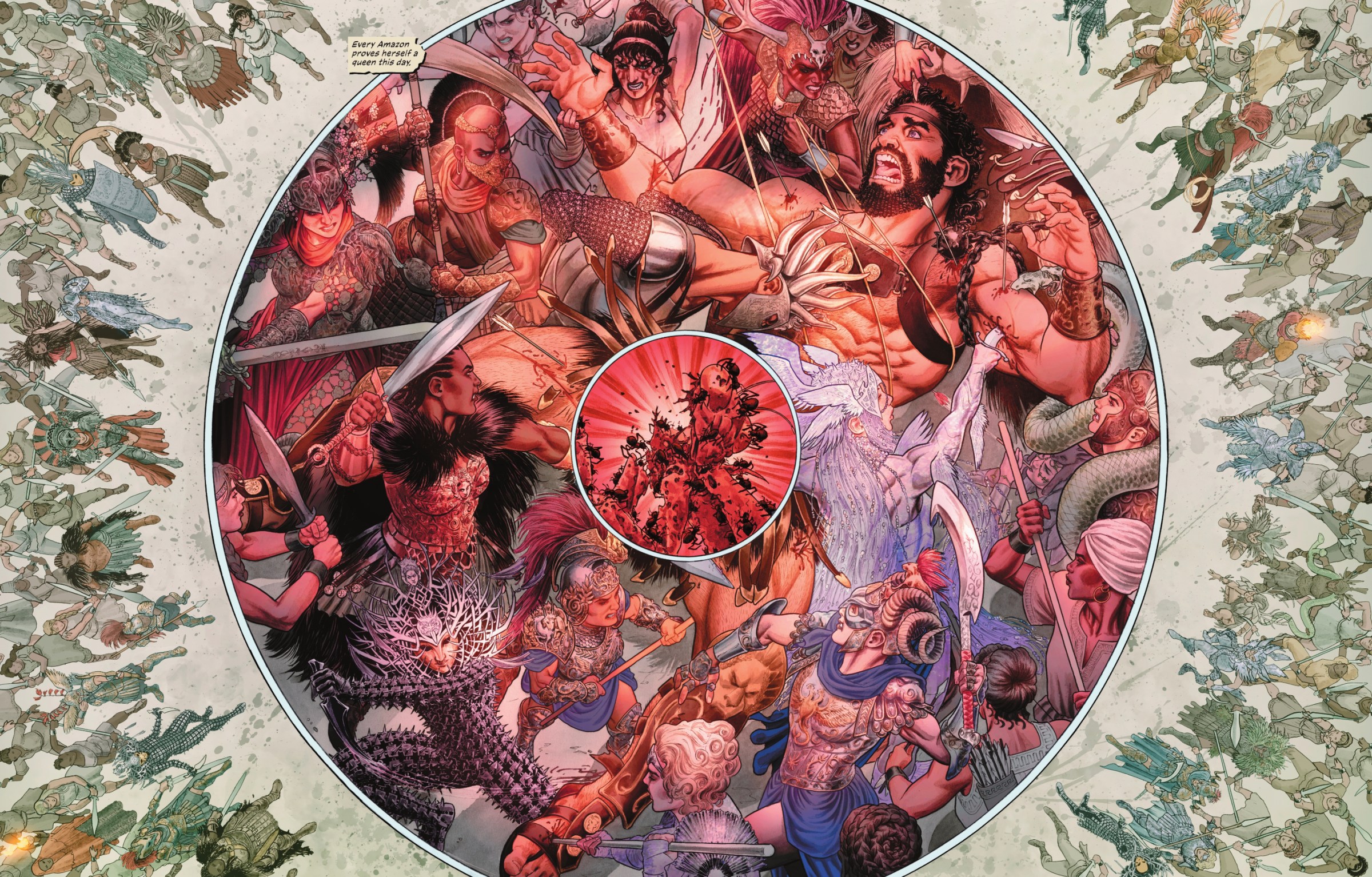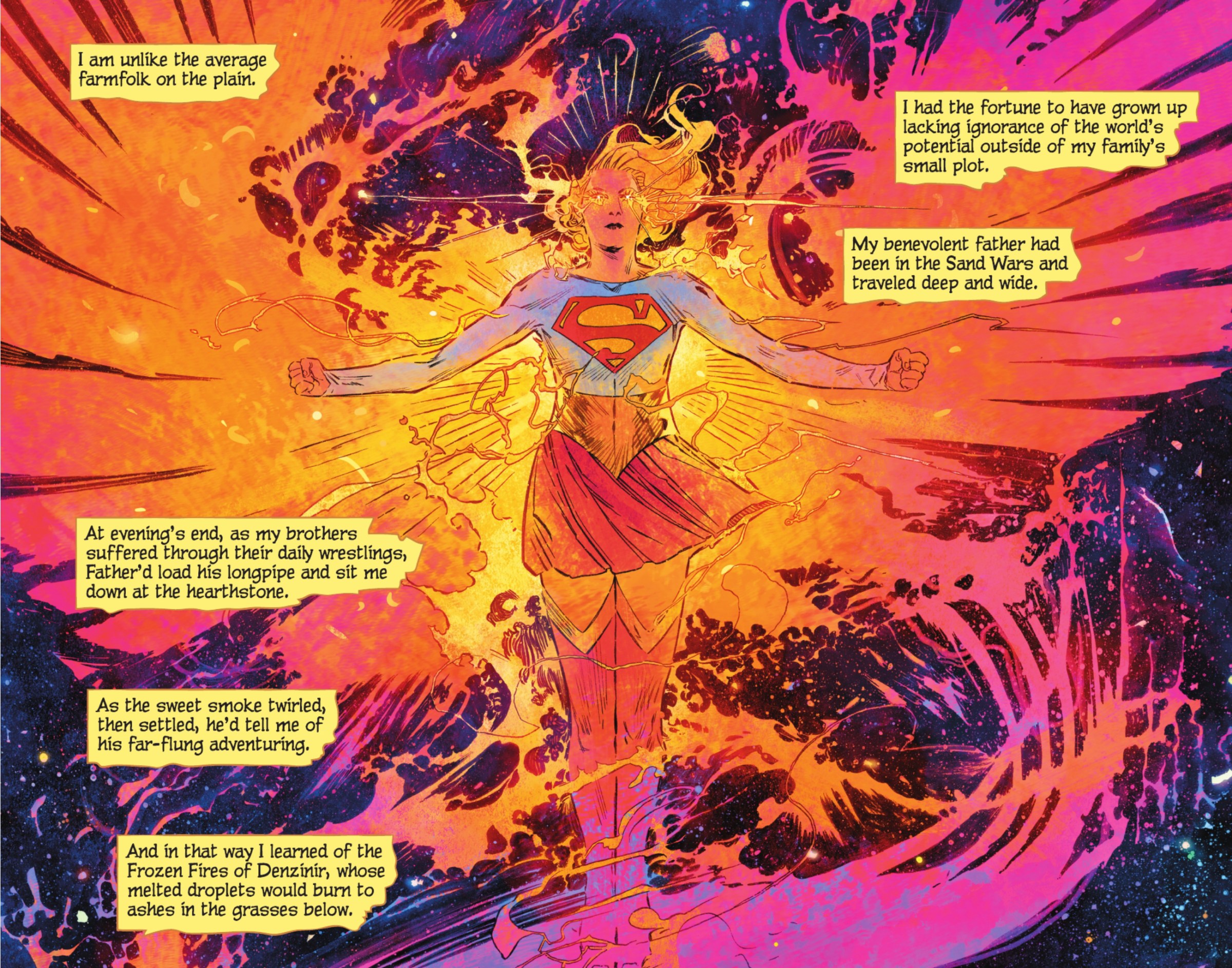DC is reviving Vertigo Comics because it has to
Among all the news from New York Comic Con this weekend, there was one item that made every comic book fan gasp. DC Comics Chief Creative Officer Jim Lee announced the return of DC’s legendary Vertigo imprint, a home for creator-owned original comics from Y: The last man Unpleasant Preacher.
The revived imprint will be overseen by DC editor Chris Conroy (who confirmed the news on X). While Lee hasn’t revealed any new Vertigo books yet, he announced that some existing DC books would be included in the imprint, just as the original Vertigo became home to pre-existing books like The Sandman. The creator’s horror series The Beautiful House by the Seafrom writer James Tynion IV and artist Álvaro Martínez Bueno, will lose its Black Label trade dress in favor of a new suit of Vertigo branding in the next reprint.
As a work owned by the creator, TNHbtS and its predecessor series, The beautiful house on the lakeits odd man out at DC’s Black Label imprint. Black Label is nominally DC’s silo for prestige, off-center continuity books about characters owned by DC Comics. It launched in 2018, about a year before Vertigo formally closed.
Just a few years ago it felt like Black Label had killed Vertigo. Now? Black Label’s success could be the motive behind Vertigo’s return.
The Western market for creator-owned comics has grown tremendously since Vertigo’s inception in the 1990s, but the imprint has still never lost its mystique, or its reputation as the home of your favorite comic book creator’s favorite comics. In 2019, Vertigo was arguably able to build on that reputation, without a new bona fide hit for some time. But it still felt jarring that DC would close it down and stop branding.
Vertigo was the place where grown-up, DC-adjacent critical darlings like to come The Sandman, Swamp thing, Hellblazer, Animal humanAnd Doom Patrol sat next to blockbuster original comics such as Preacher, Y: The last manAnd Fables. Hollywood, hungry for comic book adaptations, leaned in with adaptations of Preacher, Watchmen, Sweet tooth, The kitchenAnd Y air or rotate even if Vertigo is turned off.
The stopgap was the Black Label imprint, which promised to give the biggest comics artists as much room as possible to take big swings with DC characters — exactly what Vertigo’s company books have historically excelled at. Unfortunately, when Vertigo bit the dust, Black Label had barely published two issues, one of which was a PR boooggle.
But Black Label is now six years old, and in those six years, supervising editor Conroy has kept the ethos of a Vertigo series alive – albeit mainly under the parameters of company-owned comics.
Black Label promised liberation not just from DC continuity, but from monthly schedules and a standard comics publishing format. Black Label pages can literally be bigger than most DC comics, while projects are fun Wonder Woman Historia: The Amazons were allowed five years between announcement and final issue. Every minute of that timeline is reflected in the excellently constructed final product. Since 2018, Black Label has produced ambitious projects such as The other history of the DC universe; artist-talent showcases such as Wonder Woman: Dead Earth, Catwoman: Lonely CityAnd The boy wonder; and cross-genre work such as Rorschach And The human target.
In fact, among that slew of DC-inspired titles were two creator-owned projects, the Nice house books and the imaginative miniseries/tabletop sourcebook combo The Last God. Black Label also became the de facto home for continuations of existing titles from the Vertigo maker Sweet tooth: the return until lately Fables books.
But first and foremost, Black Label, under Conroy’s thumb, has delivered on its promise to provide a big arena and demand big swings, becoming an incubator for DC’s best talents and biggest names, such as Scott Snyder, Jeff Lemire, Daniel Warren Johnson, John Ridley, Garth Ennis, Tom King, Si SpurrierRam V, James Tynion IV, Kelly Sue DeConnickAnd June Ba.
This list of blockbuster writers and artists who have worked on Black Label books all have one thing in common: they’re all doing highly anticipated and/or undeniably successful creator-owned projects. They just do them at Image, Boom Studios, the up-and-coming Dark Horse Comics (with the Berger Books imprint of pioneering Vertigo editor Karen Berger), Substack, Dstlry, Kickstarter, or some other creator-owned outlet.
Whyyou can imagine any smart DC editor thinking: don’t they publish these stories with us? Was there no room at DC Comics for Tom King and Bilquis Evely’s? Helen of Wyndhorndescribed by the makers as a spiritual sequel to theirs Supergirl: Woman of Tomorrow? No room for Si Spurrier and Charlie Adlard’s Hellblazer-inspired Damn them all? For Ram V and Felipe Andrade’s post-Sandman meditation on the life of Hindu gods The Many Deaths of Laila Starr?
You could argue that even if DC had had a functional Vertigo imprint when those projects were being tossed around, it still might not have offered the best publishing deal on the market. But Black Label’s success shows exactly why DC Comics would want a home for creator-owned books. That is indisputable.
If Black Label really killed the Vertigo comics, DC would have had every reason to resurrect it as well.


